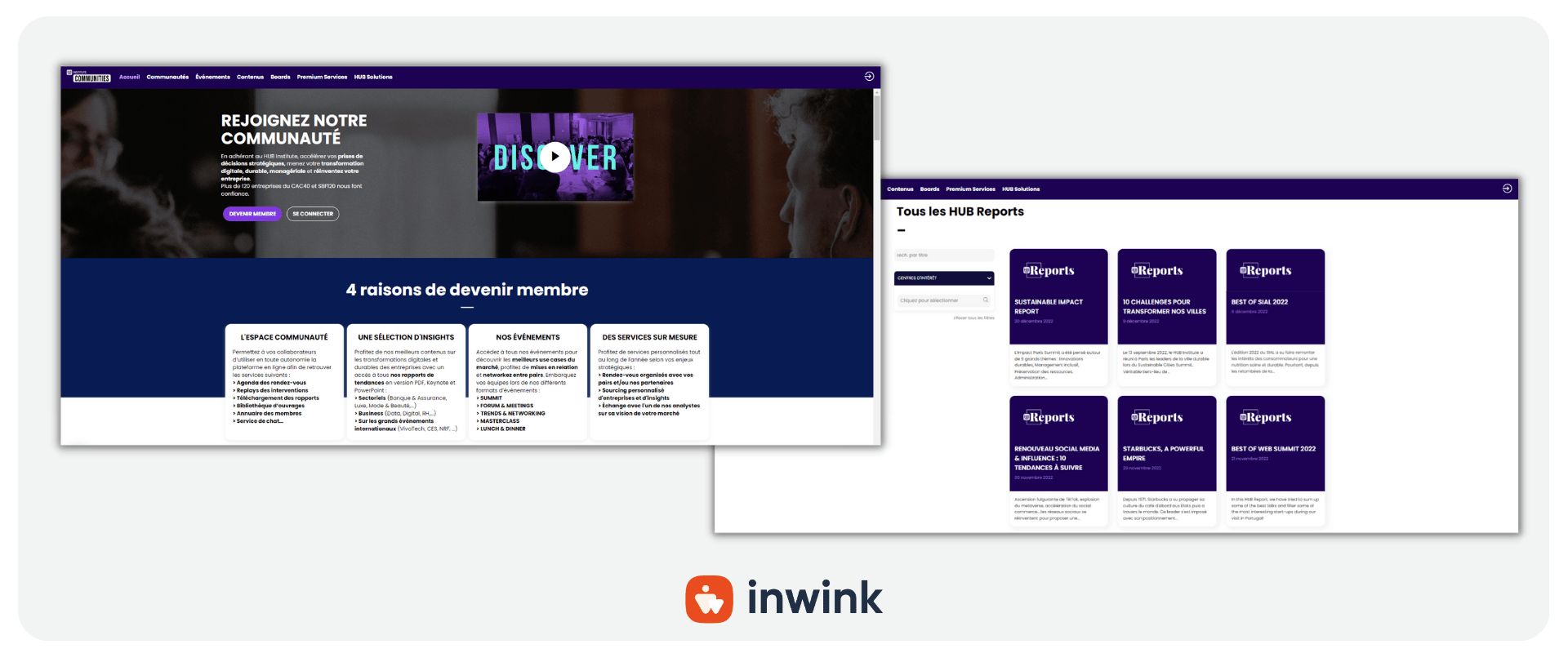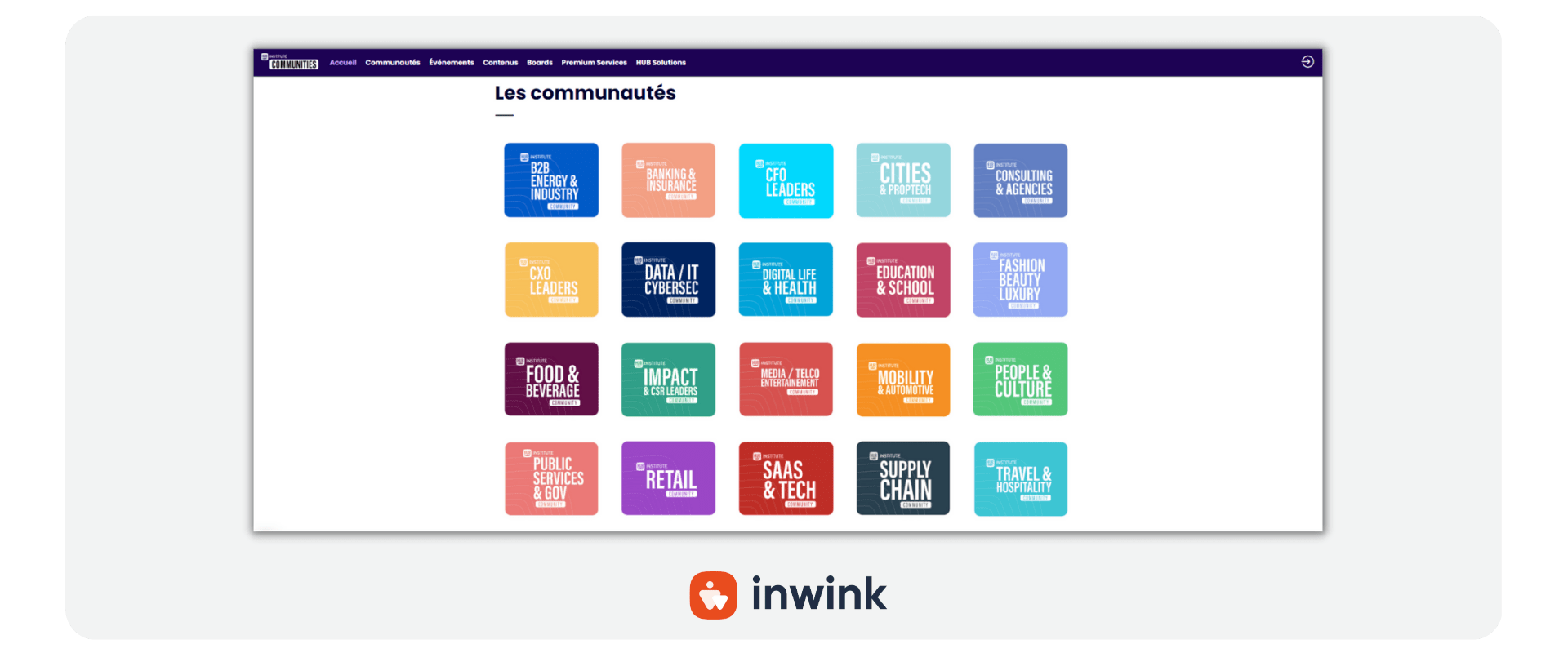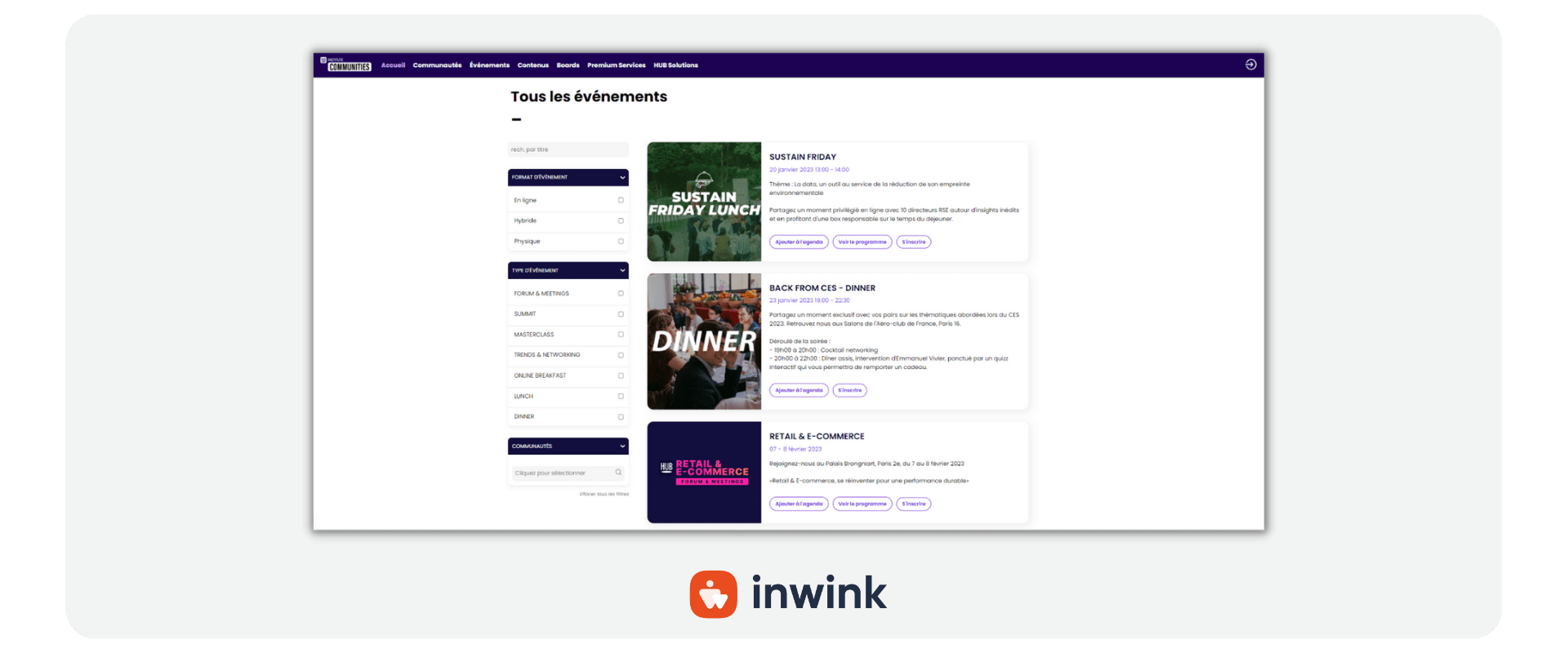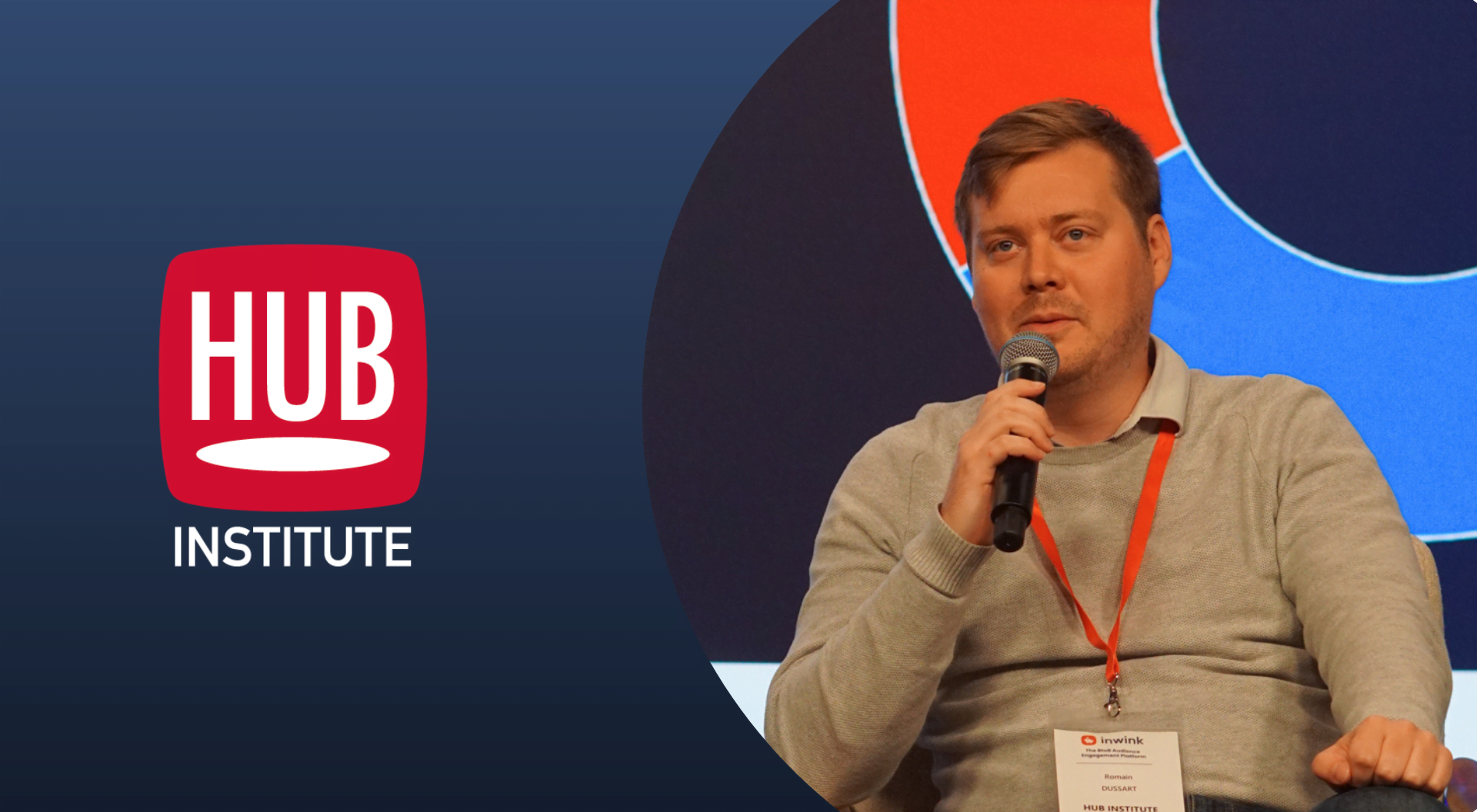During our last user group, we interviewed our customers about the animation of their communities. Here is the HUB Institute’s testimony on this subject!
Hi Romain, can you please tell us a little bit about yourself?
Romain Dussart, I work at the HUB Institute and I’m in charge of innovation projects, particularly on the community aspects. One of my objectives is to set-up a platform for all our members. We have a large community of 150 companies who are annual members and who follow all our events, all our content, whether articles or reports.
What does the HUB Institute do and why create a community?
We define ourselves as a platform that help communities of businesses- we currently have 21 different communities – accelerate their growth and get a maximum of content in order to benchmark and improve their performance.
To do this, we have a team that creates content, a team that animates these member communities and a team that handles all the events so everyone can get together. It is really important to make sure that all the different members get together to share and exchange ideas.
Historically, we did this using basic tools that didn’t work very well, but now we want to have a platform that centralizes everything and allows our members to have a great experience.
What types of members do you have in your community? Are they companies or individual members?
We work with companies, mostly large companies, that will allow a few people within the company, maybe ten or twenty, to become members of the community, and therefore access our exclusive content. Our approach is that the company members have access to the largest amount of content possible that they then share as widely as possible within their company.
Paid or free communities?
The company in question will pay for membership for a defined number of people. And then they will have access to either all the content in French or all the content in French and English. So, we also have a need for different levels of membership.
Why did you choose inwink Community?
We tested a lot of things. And we had a lot of teething problems.
Before deciding to use inwink, there were many phases, and from the early stages we decided we needed a community site.
Since our audience was already on Facebook, we started the first small community on Facebook where people could exchange ideas and ask each other questions. They started to interact.
Clearly, it didn’t meet our users’ needs. At the beginning, the users were very involved though it rapidly became difficult to find published content.
Our members quickly gave us feedback on the use of Facebook because they had personal photos on there and were not very comfortable with that.
Then we said to ourselves “why not do it on LinkedIn?” So, we did it on LinkedIn. And once again, it wasn’t made for what we needed. People do use LinkedIn professionally but go online less often so we had a loss of engagement, and overall, it was still just as difficult to find information.
Then we decided to centralize everything and do it ourselves, so we tried to do it on our website, which is built with Drupal. We tried and managed to structure the whole “content” part a little better, but the community part was not so good.
And then, as a last step, we hijacked the inwink event site to make a mini community.
Little by little, we were faced with the platform’s limits, but were then very happy to see that inwink was further developing the community functionality and it would pretty much meet all our needs.
An area where people can exchange ideas, ask questions, and have all the content centralized to find the trend reports we produce.
In addition, data was important to us. We are now able to track information and have a more holistic overview of our members’ user journey and engagement.

How do you recruit and engage your members?
In order to attract new members, we identify companies who are not yet members and who either buy our reports or tickets to our events. So, we identify these companies and we have created a special offer “become a member” for 3 months, called Discovery.
It’s a free offer to come and see how things are going in the community, to see that there is such and such content. And afterwards, above all, they will experience our events because this is also an important part of our community.
Concerning our events, our community members have a bit more of a premium experience. That’s how we’re going to convert them and we’re going to explain all the benefits of membership to them and then they take their yearly subscription.
Who manages the community?
We have a team dedicated to the community, with multiple roles. They are sort of the “eyes and ears” and ambassadors for our members internally. They are there to remind us of our members’ interest in our events, about this or that editorial decision, for example. They are there to understand what our customers’ current issues are. So, every day they are in almost constant communication with members by email, by phone, during our events.
They also make recommendations on what they have heard about a current customer issue and on the need to produce this or that content. We have a team dedicated to content, which then takes care of getting that content produced.
The last point that is ultra-important is networking because when our members enter this community, it is also so they can benchmark what is done in other sectors. And they find it very difficult to do this independently. And on this point, they rely on us to meet, not only other members, but also technology providers who could potentially help find a solution to one of their current issues.
How many communities have you developed?
Historically, we had one big community, within which all the content was published. That didn’t really suit us. We had to think about whether we should create a community for each sub-community? Or one big platform that allows access to the different communities?
In our case, a member can in fact be in several communities at once, around 3 or 4. So we decided to create several sub-communities.
Another aspect that helped us decide on the maintenance of all the content. We only have one team that manages all the communities, so having a central platform is much easier for the team that manages the content and the members.
And how many sub-communities?
We have 21, with 2 different approaches, the first pretty much sectorial, we will put all the retailers together for example. And the other more related to jobs or professions, with players in the finance or sustainable development fields, for example. So, they each have their own community.

How will you create a link between events and communities?
For the HUB Institute, we historically had one big event that generated a lot of services called the HUB Forum. What we noticed was that we had quite a few ambassadors and people who came, which is where this idea of membership, of a member zone and then this community, came from.
On the client side as well, because we also organize events for clients, we initially accompanied a client that wanted to do a first event, then a 2nd, then a 3rd. We quickly came up with the idea of creating a community, so that all the content would be permanently accessible throughout the year and would naturally increase the lifespan of the content shared during the conferences.
The community came more from the events, we’ll say in an industrial way. We have all this content and it’s a bit silly for this event to die after a while. We asked ourselves the question of how to make this content last over time and how to include it in a more global strategy.


